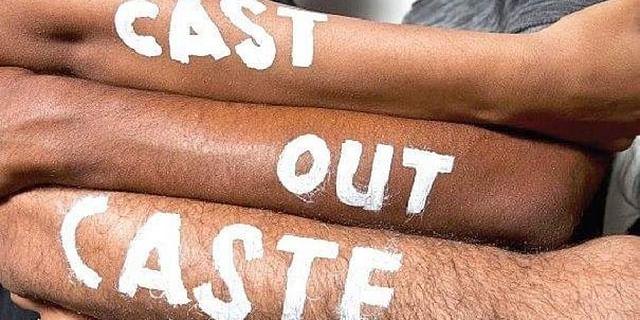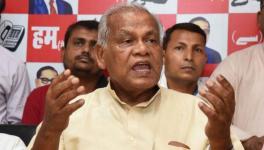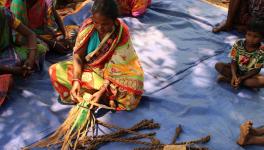Why Dalit Capitalism Does Not Lead to Emancipation

Representational Image. Image Courtesy: The New Indian Express
Chandra Bhan Prasad, a noted advocate of entrepreneurship as a way to emancipate Dalits, acknowledged in a recent interview that capitalism breeds inequality. Prasad and the Dalit Indian Chamber of Commerce and Industry (DICCI), an organisation he supports and promotes, posit Dalit capitalism as an emancipatory tool. DICCI has steered Dalit-run and Dalit-owned businesses for 16 years. To Prasad, the inequality inherent to capitalism gets balanced by the “freedom” of opportunities the market provides. Indeed, these are opportunities the Dalits were earlier denied. There are dynamic new Dalit entrepreneurs, some even millionaires.
Yet, DICCI and supporters of capitalism fail to realise that caste inequality has created space for caste and class discrimination even within the market. The notion of a level playing field for entrepreneurs regardless of caste, gender and class is a myth. After all, it is the market that pushes Dalits out of the “casteless” mainstream.
Success versus emancipation
For supporters of neoliberal markets, investors operate in a “free” market, not influenced by social prejudices related to religion, caste, gender, etc. According to Milind Kamble, the chairman of DICCI, there are approximately 8.7 million Scheduled Caste-owned businesses in India. The central government launched the Stand-Up India scheme in 2016, intending to support mostly Scheduled Caste, tribal and women entrepreneurs. According to recent government data, more than 16,200 SC entrepreneurs took more than Rs. 3,300 crores as start-up loans since its inception.
A Public Procurement Policy launched in 2018 mandates every central ministry, department and public sector unit to procure 4% of supplies from SC/ST enterprises. Such a policy is predisposed to select candidates who already have access to an investible surplus. Hence, it falls short of acknowledging the caste discrimination that exists in the sphere of entrepreneurship.
Social anthropologist David Mosse, an expert on the economics of caste and its relation to market economy and modernity, describes how the modern market economy ignores caste, even though discourses of religion and politics dwell on the operation of caste. Caste is considered a social reality of a bygone era that has no place in a modern marketplace. If casteism in business dealings gets exposed, it gets treated as a residual problem. We fail to see that caste is a dynamic social marker that makes markets run.
For instance, the media invariably projects Dalit capitalism as a rags-to-riches story. Without individual success stories, there would be more reason to explore why Dalit capitalism is a subset of the capitalism we see all around. In a critique, social scientist Gopal Guru says that the Dalit capitalist is a minor spectacle concealed within the gargantuan globalised spectacle of India’s elite caste-dominated market.
For this reason, individual Dalit success stories never narrate their effect on the development of the market, society or nation. Established elite-caste entrepreneurs already occupy market innovations and creative manoeuvres. Instead, the corporate sector circulates a self-serving spectacle of the successful Dalit entrepreneur, a side-story that exists to prove that this market is inclusive. They are, in the end, ‘Dalit’ stories, not market stories.
Dalit socio-political assertion
The business world cannot ignore the socio-political assertion of Dalits. The state, too, supports Dalit entrepreneurship. However, the aim is to accommodate Dalits into the neoliberal terms of trade. Individual successes get posited as markers of the overall integration of Dalits in business and, therefore, society. It is then regarded as a triumph of neoliberal policies over traditional caste society.
DICCI proposes that the Dalit emancipatory project rests on the growth of a capitalist economy, which will create a Dalit bourgeoisie. No attention gets paid to that Dalits are disadvantaged in and by markets and that the segregation of Dalit capitalists in the neoliberal market mimics their traditional exclusion in society.
Since caste rarely gets addressed in the context of the economy, the view that Dalit emancipation hinges on capitalism also reflects the discontent of Dalits (including Dalit capitalists) with political struggle. A counter-question also arises: if the market is fixing all problems, including caste, what hope is there for Dalit political emancipation that will annihilate caste? Indeed, a Dalit bourgeoisie and a Dalit proletariat go hand in hand. One creates the other who cannot participate in the free market. As capitalist expansion proceeds, the Dalit proletariat will toil to make wealthy Dalits following the neoliberal model. All this while, one is encouraged to ignore Dalit politics or see it as a smaller struggle within an ostensibly burgeoning Dalit capitalism.
Also, many Dalit businesses depend on government loans and procurement. Therefore, it is counterintuitive to talk about support from neoliberal markets. This model shrinks state control over markets, so it follows that fewer Dalit businesses would find support for market matters and risks. Our economy hinges on neoliberal reforms and mass-privatisation, but the Dalit capitalists and Prasad rarely, if ever, question this.
Talking caste in the market economy
Talk about caste in the context of markets is a no-go subject. However, Dalit entrepreneurs encounter prejudices based on caste, and their experience ‘prove’ that caste does not just exist in economic interactions but defines them. Scholar Aseem Prakash’s field research involving over 90 Dalit businesspersons demonstrates the strong influence of caste in a market that members of elite castes dominate.
Prakash finds that caste prejudice strikes the ordinary Dalit entrepreneurs (and not the spectacular Dalit millionaires) at the initial stage when they need capital to start their operations. And this means they must rely on a handful of networks to mobilise capital. Formal institutions such as government banks also deny loans on the ruse that the Dalit applicants are “not capable of handling business”.
The experience of a Dalit laundry-owner in Lucknow in Prakash’s account is illuminating: “As soon as the officer [dealing with his loan request] learnt that I reside in Dhobi Katra, his behaviour changed. He explained to me that I would be unsuccessful in managing a modern laundry and would lose all my money in the market. He further told me to continue with my washing activities on the riverbank as well as ironing clothes. He went to the extent of suggesting that I should buy my son a new cart to iron clothes so as to augment my family income . . .”
The laundry owner complains to the interviewer: “You tell me, if my father and grandfather have washed clothes on the bank of Gomti, does it mean both I and my son also have to wash clothes similarly? I had decided that I would not wash clothes on the river bank any more and whoever wants to get their clothes washed and starched has to come to my shop. I will not go door-to-door collecting clothes for washing and then returning them...”
Other forms of discouragement include a loan officer telling a Dalit medical doctor who wanted to start a nursing home that they are “cornering all government” resources thanks to reservations.
Aside from discrimination at the first step, Dalit entrepreneurs also have to be cautious not to propose business ideas in lines associated with existing Baniya, Patil and other Savarna castes, which they would see as a challenge. They can be partners with the members of these castes, but to compete against their established businesses is a risk, as Dalit entrepreneurs neither have the social networks to pull strings nor the capital to serve demand independently.
In several instances, partnerships with members of elite castes (which bring in capital investment) towards a contract turn out to be predatory. While the state would guarantee Dalit entrepreneurs an assured market for their goods and might even help raise capital, they enter alliances with non-Dalit businesspersons. “In a few cases, the upper-caste partner’s capital and social contacts are able to influence the sanction of larger government contracts and the Dalit is de facto reduced to the status of a junior partner (although legally the government contract has to be in the name of the Dalit). In other instances, Dalit business people have been reduced to the position of supervisor/manager of the economic activity legally carried out in their name,” Prakash notes.
Further, elite caste peers usually do not help Dalits while they consistently work with others to, for instance, face the heat of the market. Such episodes testify that the “free” market does not subdue social markers but teaches them to create advantages for some and disadvantages for others. As for those whose labour gets exploited for the markets, Gopal Guru reminds, “Dalit millionaires are associated with exploitation, but at different levels. Initially, some of them have themselves been the victims of exploitation by others. Once they acquire their limited power, they exploit others, and most of the time their own people.” The neoliberal market does not just perpetuate casteism but also ensures participation in “perpetuation of casteism”.
Guru explains how government outsourcing of urban governance and sanitation management has created “garbage managers”. These are contractors from the Dalit communities who severely exploit ragpickers. “Dalit ragpickers now have exploiters both from within and outside the community,” he notes.
Ordinary Dalits get exploited as labourers who “carry” the capitalist market and earn the lowest wages. The logic of profit does not change that of caste society. Instead, it casts Dalits in the role of either exploiter or exploited. There is no emancipation in either of these roles. It lies in collective action to annihilate caste, not even in pursuing individual successes and profit.
The author is an independent writer interested in the history of traditional and modern cultures of India. The views are personal.
Get the latest reports & analysis with people's perspective on Protests, movements & deep analytical videos, discussions of the current affairs in your Telegram app. Subscribe to NewsClick's Telegram channel & get Real-Time updates on stories, as they get published on our website.
























